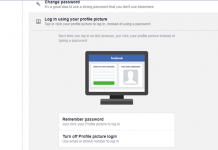You can now change the screen resolution on your Samsung Galaxy S7, Galaxy S7 Edge and all other Nougat powered Samsung Galaxy handsets. Nougat update will revert the display of your phone from WQHD to FHD mode. Here’s how to fix it.

Samsung recently rolled out Android 7.0 Nougat update for the Galaxy S7 and S7 Edge. New firmware brings a handful of new features and enhancements. Android Nougat revamps the whole TouchWiz UI for Samsung Galaxy smartphones. Settings application, dialer, caller ID, icons status bar, toggles menu and many other UI elements have been touched up from scratch. Nougat update makes the phones much more fast and the battery life has improved as well.
Samsung has increased the number of options to customise the phones in their stock state. Users can now choose what display resolution do they want to see on their phone’s screen. Galaxy S7 and S7 Edge both have QHD displays, but just in case you wish to save a few hours of battery life, you can tone down the resolution and get the maximum time output from your phone. For this particular reason, when the phone gets updated, by default it runs the UI on 1080 x 1920 pixels resolution instead of 2560 x 1440 pixels. If you haven’t already noticed, the display of your phone is not as flashy as it was before the Nougat update, because it is running on a much lower resolution. In case this has already got you worried, you immediately need to stop panicking as the option is right there in your phone.
Samsung has added the resolution option in the display settings of Android Nougat firmware. You can simply open settings and change it according to your liking. Have a look on the method to do it right now to fix the display on your Galaxy S7, Galaxy S7 Edge and other Samsung Galaxy smartphones.
How to fix display after Nougat update Samsung Galaxy S7/S7 Edge
- On your Nougat powered Samsung Galaxy phone, go to Settings.
- In Settings > Display.
- Now in display, find “Screen resolution” and tap it.
- In the screen resolution menu, select you desired resolution and apply the settings.
- That’s it!













